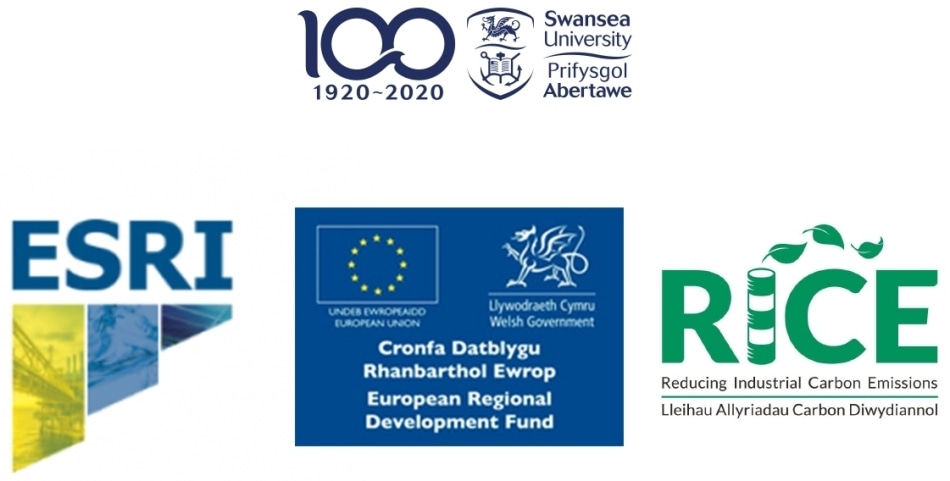Jun 14 2019
In partnership with a Rice University laboratory, the Energy Safety Research Institute (ESRI) at Swansea University creates and shares a low-cost technique to securely deal with the transfer of bulk carbon nanotubes and other nanomaterials.
 Image credit: Swansea University
Image credit: Swansea University
With some practice, it does not require any more than 10 minutes, few bags, and a big bucket to maintain nanomaterials in their place.
Prof Andrew R. Barron, the Director of the Energy Safety Research Institute (ESRI) at Swansea University, deals with bulk carbon nanotubes on numerous projects. A few years back, members of his research team at Rice University in Houston, Texas, became worried that nanotubes could escape into the air, and formulated an inexpensive and clean technique to keep them contained as they were moved from big containers into jars for use in experiments.
Of late, Barron himself became troubled that unlike the BREEAM Outstanding laboratories of ESRI, very few labs globally were using best practices to manage nanomaterials, so decided to share what his team had discovered.
There were a series of studies that said if you're going to handle nanotubes, you really need to use safety protocols. Then I saw a study that said many labs didn't use any form of hood or containment system. In the U.S., it was bad, and in Asia, it was worse even though there were a significant number of labs scaling up to use these materials at the kilogram scale without taking the proper precautions.
Prof Andrew R. Barron, Director, ESRI, Swansea University
The lab's low-cost technique is explained in an open-access paper in the Springer Nature journal SN Applied Sciences.
In bulk form, carbon nanotubes are fluffy and spread easily when disturbed. The Barron research labs usually store the tubes in 5-gallon plastic buckets, and merely opening the lid is sufficient to cause them to start flying because of their low density.
Varun Shenoy Gangoli, a research scientist in Barron's lab in the Department of Chemistry, at Rice University, and Pavan Raja, a scientist with Rice's Nanotechnology-Enabled Water Treatment center, formulated their own technique that involves safeguarding the worker and sequestering loose tubes when removing smaller quantities of the material for use in experiments.
Complete details can be found in the paper, but the safeguards include ensuring workers are appropriately attired and wearing lab coats, face masks, and full goggles, together with two pairs of gloves duct-taped to the lab coat sleeves. The makeshift glove bag includes a 25-gallon rubbish bin having a plastic bag taped to the rim. The unopened storage container is kept inside, and then the bin is covered using another transparent trash bag, with small holes pierced in the top for access.
After moving the nanotubes, the gloves are cleaned using acetone wipes and more acetone is sprayed inside the barrel so settling nanotubes would adhere to the surfaces. These can be recovered and placed back into the storage container.
Professor Barron said: “It took lab members time to learn to use the protocol efficiently, but now they can get their samples in 5 to 10 minutes. I’m sure other labs can and will enhance the technique for their own circumstances.”
A poster showcased at the 9th Guadalupe Workshop on Carbon Nanotubes on this matter received recognition and discussion among the world’s leading scientists in the field, noting the significance of the work for organizations in general.
When we decided to write about this, we were originally just going to put it on the web and hope somebody would read it occasionally, but we heard that an editor at Springer Nature was really keen to have published articles like this. I think this is something people will use, as it’s a practical guide that helps everybody from high schools and colleges that are starting to use nanoparticles for experiments to small companies. That was the goal: Let's provide a process that doesn't cost thousands of dollars to install and allows you to transfer nanomaterials safely and on a large scale. By publishing in an open-access journal to maximise the reach and impact across the globe.
Prof Andrew R. Barron, Director, ESRI, Swansea University
Gibran Liezer Esquenazi, alumni of the Barron group at Rice, is the paper’s co-author. Barron is the Sêr Cymru Chair of Low Carbon Energy and Environment at Swansea University, and Professor Emeritus of Chemistry at Rice University.
The research received funding via the Robert A. Welch Foundation, the Office of Naval Research, and the Welsh Government through the Sêr Cymru Chair Program.